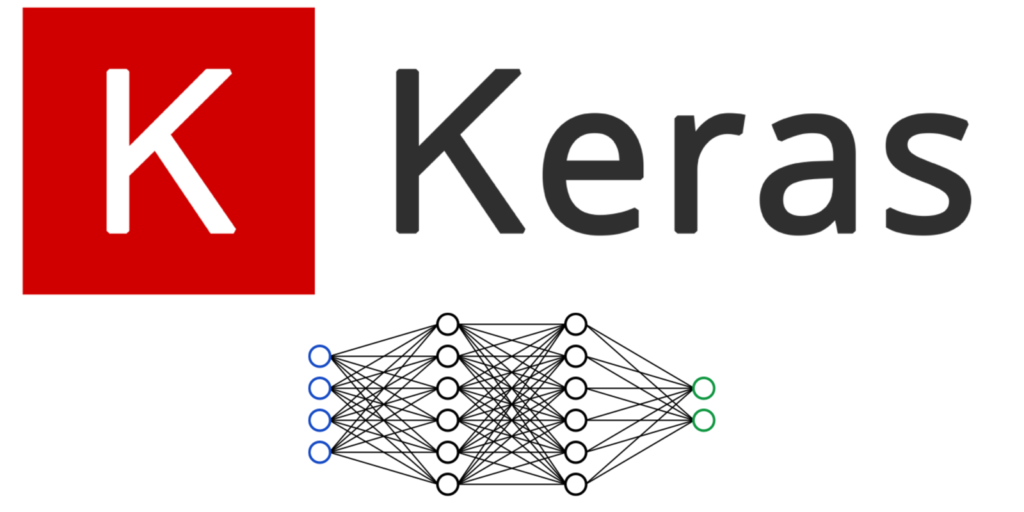
In the ever-evolving realm of artificial intelligence, developers and data scientists constantly seek cutting-edge tools and frameworks to streamline their projects.
Among these tools, Keras stands out as a versatile and powerful library for deep learning.
In this article, we will delve into the world of Keras AI tools, exploring its features, applications, and why it has gained prominence in the AI community.
Understanding Keras: A Brief Overview
Keras is an open-source, high-level neural networks API written in Python.
What sets it apart is its user-friendly interface, designed to facilitate rapid prototyping and experimentation. https://lovishweb.com/
Developed by François Chollet, Keras became an integral part of the TensorFlow ecosystem, making it even more accessible to AI enthusiasts.
- Simplicity and Versatility
One of Keras’ standout features is its simplicity.
It allows users to build and train deep neural networks with just a few lines of code.
This simplicity doesn’t compromise its versatility;
Keras supports both convolutional and recurrent networks, enabling the creation of complex models for various tasks.
- Integration with TensorFlow
As Keras is integrated seamlessly with TensorFlow, users can leverage the best of both worlds.
TensorFlow serves as the backend, providing robust support for computation, while Keras offers a user-friendly API for building neural networks.
This combination has made Keras a preferred choice for both beginners and experienced machine learning practitioners.
- Community and Documentation
Keras boasts an active and vibrant community.
This means extensive documentation, a repository of pre-trained models, and a wealth of tutorials and resources.
Whether you’re tackling image recognition, natural language processing, or reinforcement learning, Keras has you covered with its comprehensive ecosystem.
Keras AI Tools: The Expanding Arsenal
Keras goes beyond its core library. It has inspired the development of numerous AI tools and extensions, catering to specific needs within the AI landscape.
Let’s explore some of the noteworthy Keras AI tools and their applications.
- Keras Tuner
When it comes to optimizing hyperparameters, Keras Tuner takes the spotlight.
It provides an efficient and user-friendly way to search for the best set of hyperparameters for your deep learning model.
This tool can save hours of manual tuning, making model optimization more accessible.
- Keras Preprocessing
Data preprocessing is a crucial step in any machine learning project.
Keras Preprocessing simplifies this process by offering utilities for data augmentation, image preprocessing, and sequence preprocessing.
It streamlines data preparation, allowing users to focus on model development.
- Keras Applications
Keras Applications offers a collection of pre-trained models for various tasks, such as image classification and feature extraction.
By leveraging these models, developers can save time and resources while achieving impressive results in their projects.
- Keras-RL
Reinforcement learning is a hot topic in AI, and Keras-RL provides a toolkit for building and training reinforcement learning agents.
With this tool, developers can experiment with different algorithms and environments, paving the way for innovative AI solutions.
- Keras-GAN
Generative Adversarial Networks (GANs) have revolutionized image generation and manipulation.
Keras-GAN simplifies GAN implementation, making it accessible for artists, researchers, and developers interested in creating and exploring AI-generated content.
SEO Optimization for Keras AI Tools
To ensure that your Keras AI projects receive the attention they deserve, it’s crucial to optimize your content for search engines. Here are some SEO best practices to consider:
- Keyword Research: Identify relevant keywords related to Keras AI tools, such as “Keras Tuner,” “Keras Preprocessing,” and “Keras Applications.” Incorporate these keywords naturally into your content.
- Quality Content: Provide valuable information about Keras AI tools, their features, and applications. High-quality content attracts readers and search engines alike.
- Engaging Headlines: Craft compelling headlines that accurately reflect your content. Use headings and subheadings to organize your article for readability.
- Internal and External Links: Include links to authoritative sources and relevant articles within your content. This enhances the user experience and SEO ranking.
- Mobile Optimization: Ensure that your content is mobile-friendly, as mobile optimization is a significant factor in search engine ranking.
.
1. Keras Tuner:
Use Case: Keras Tuner is invaluable when you have a deep learning model but need to find the optimal combination of hyperparameters, such as learning rates, batch sizes, or the number of layers.
It automates the hyperparameter tuning process, saving time and resources.
Advantages: It supports various tuning algorithms, including random search and hyperband, and integrates seamlessly with Keras.
Users can define their hyperparameter search spaces and objectives, allowing for fine-grained control.
Considerations: While Keras Tuner simplifies hyperparameter tuning, it’s essential to have a good understanding of your model’s architecture and the impact of different hyperparameters to make informed decisions.
- Keras Preprocessing:
Use Case: Data preprocessing is a critical step in machine learning. Keras Preprocessing provides tools for image and sequence data preprocessing, simplifying tasks like resizing images or tokenizing text.
Advantages: It offers a range of functions for data augmentation, which is crucial for increasing the diversity of your training data. This helps improve the robustness of your models.
Considerations: Ensure that you preprocess your data consistently to avoid data leakage and maintain the integrity of your experiments.
- Keras Applications:
Use Case: Keras Applications is a treasure trove of pre-trained deep learning models, such as VGG16, ResNet, and Inception. These models are ready to use for various tasks like image classification or feature extraction.
Advantages:
Leveraging pre-trained models saves time and computational resources. You can fine-tune these models on your specific datasets, achieving state-of-the-art results with minimal effort.
Considerations:
Ensure that the pre-trained model aligns with your task and dataset. Fine-tuning may require a good understanding of transfer learning concepts.
- Keras-RL:
Use Case:
Reinforcement learning (RL) is applied in areas like robotics, gaming, and autonomous systems. Keras-RL simplifies RL model development by providing implementations of popular algorithms.
Advantages:
It offers a unified interface for various RL algorithms, making it easier to experiment and compare different approaches. Developers can create agents and train them on custom environments.
Considerations:
RL can be challenging and computationally intensive. Familiarize yourself with RL concepts and consider starting with simple environments before tackling complex tasks.
- Keras-GAN:
Use Case:
Generative Adversarial Networks (GANs) have revolutionized image generation and manipulation. Keras-GAN simplifies GAN implementation, making it accessible for various creative and research endeavors.
Advantages:
It provides a user-friendly API for building GANs, allowing artists, researchers, and developers to generate synthetic content, create deepfakes, or enhance images with ease.
Considerations: Be aware of ethical considerations when working with GANs, particularly in areas like deepfake generation or content manipulation. Respect privacy and copyright laws.
SEO Optimization for Keras AI Tools:
To maximize the visibility of your content on search engines, consider these additional SEO tips:
- High-Quality Images and Alt Text:
Include relevant images and use descriptive alt text. For example, if discussing Keras Preprocessing, include images of data augmentation techniques with alt text like “Image Augmentation.”
- Meta Tags:
Optimize your meta title and meta description with target keywords. These tags are essential for search engine results pages (SERPs).
- Quality Backlinks:
Build quality backlinks to your article from authoritative sources. This can improve your content’s credibility and SEO ranking.
- Regular Updates:
Keep your content up to date. AI tools and best practices evolve, so ensure your article remains relevant and accurate.
- Engage with Your Audience:
Encourage reader engagement through comments and discussions.
Respond to questions and comments promptly to foster a sense of community around your content.
In conclusion, Keras AI tools, with their simplicity and power, are a boon to AI developers and data scientists.
When used effectively and in conjunction with SEO best practices, they can help you not only create outstanding AI projects but also ensure that your knowledge and innovations reach a broader audience.
Remember, staying informed about the latest developments in Keras and the AI field is key to long-term success.
- Custom Model Building with Keras:
While Keras offers a library of pre-built models through Keras Applications, many projects require custom model architectures.
Keras excels in this aspect, allowing developers to create tailored neural network architectures effortlessly.
Whether you need a convolutional neural network (CNN) for image processing or a recurrent neural network (RNN) for natural language processing, Keras enables you to build and experiment with your models.
- Transfer Learning and Fine-Tuning:
One of the significant advantages of Keras AI tools, particularly Keras Applications, is the concept of transfer learning.
You can take a pre-trained model, often trained on vast datasets like ImageNet, and fine-tune it for your specific task.
This approach dramatically reduces the amount of labeled data required for your project and accelerates training times.
- Deployment Considerations:
When using Keras AI tools to develop models, it’s essential to plan for deployment. Depending on your project’s requirements,
you can deploy your model on cloud platforms like Google Cloud ML Engine, AWS SageMaker, or Azure Machine Learning.
Alternatively, you can convert your model to formats suitable for deployment on edge devices, such as TensorFlow Lite for mobile applications or TensorFlow.js for web applications.
- Interpretability and Explainability:
As AI applications become more widespread, the need for model interpretability and explainability grows. Keras AI tools offer techniques like Integrated Gradients, SHAP (SHapley Additive exPlanations), and LIME (Local Interpretable Model-agnostic Explanations) to help understand model predictions and decisions better. These tools can be crucial when dealing with AI solutions in fields like healthcare or finance, where transparency is vital.
- Handling Imbalanced Datasets:
In real-world scenarios, datasets often suffer from class imbalance, where certain classes have significantly fewer samples than others. Keras AI tools provide methods to address this issue, such as class weighting and oversampling/undersampling techniques. These approaches help improve model performance on imbalanced data and maintain fairness in predictions.
- Computational Resources:
Deep learning models, especially large ones, demand substantial computational resources. Training complex models can be time-consuming and expensive, both in terms of hardware and energy consumption. It’s essential to plan your infrastructure and budget accordingly when working on AI projects with Keras.
- Ethical Considerations:
As with any AI development, ethical considerations should be at the forefront. Ensure that your projects using Keras AI tools adhere to ethical guidelines, particularly when dealing with sensitive data or applications with societal impact. Strive for transparency and fairness in your models and be aware of potential biases.
- Staying Updated:
The field of deep learning and AI is rapidly evolving. New versions of Keras and its associated tools are continually being released, along with advancements in AI research. To stay at the forefront of AI innovation, it’s essential to follow AI-related news, participate in online communities, and continue learning and experimenting.
- Training and Re-Training:
Machine learning models, including those built with Keras, may require periodic re-training to maintain their performance. The world changes, data distributions shift, and models can become outdated. It’s crucial to have a plan for model maintenance and updates in your long-term project strategy.
Conclusion
In conclusion, Keras AI tools offer a rich ecosystem for AI development, from custom model building to advanced interpretability techniques. While they simplify many aspects of AI development, it’s essential to consider deployment, ethical considerations, and staying up-to-date in this dynamic field. With the right approach, Keras can empower you to create AI solutions that make a positive impact on various industries and domains.
